Liberal Party of Canada
| Liberal Party of Canada Parti libéral du Canada |
|
|---|---|
| Active Federal Party | |
| Founded | July 1, 1867 |
| Leader | Stéphane Dion |
| President | Doug Ferguson |
| Headquarters | 81 Metcalfe St, Suite 400 Ottawa ON K1P 6M8 |
| Political ideology | Liberalism Social liberalism |
| International alignment | Liberal International |
| Colours | Red |
| Website | http://www.liberal.ca |
The Liberal Party of Canada (French: Parti libéral du Canada), colloquially known as the Grits (originally "Clear Grits"), is a major Canadian political party. The organization is located in the centre of the Canadian political spectrum, combining a liberal social policy with moderate economic policies. Starting with Wilfrid Laurier in 1896 every leader of the party (excepting current leader Stéphane Dion) has served as Prime Minister of Canada. The party has formed the Official Opposition in the Parliament of Canada since February 2006.
The Liberal Party is Canada's oldest functioning party at the federal level; the only party remaining from Confederation.[1] The Liberal Party held power for more years of the 20th Century than did any other party in any developed Western country. The party is led by Stéphane Dion, who was elected to the position at the party's leadership convention on December 2, 2006. After the party's second consecutive defeat (the first under the leadership of Paul Martin), Dion announced he will step down after a new leader is chosen.[2] Currently, a Liberal-led coalition is seeking to defeat the Conservative government as part of the 2008 Canadian political dispute.
Contents |
History of Leaders
| Picture | Name | Term start | Term end |
|---|---|---|---|
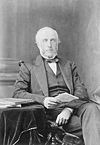 |
George Brown | First leader | 1867 (Interim) |
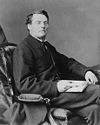 |
Edward Blake | 1869 | 1870 (Interim) |
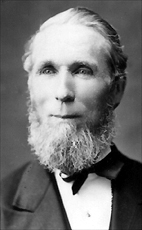 |
Alexander Mackenzie | 1873 | 1880 2nd Prime Minister |
 |
Edward Blake | 1880 | 1887 |
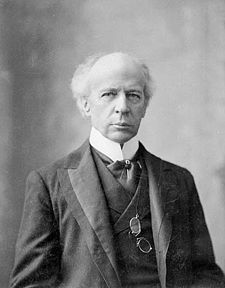 |
Wilfrid Laurier | 1887 | 1919 7th Prime Minister |
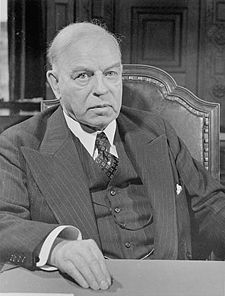 |
William Lyon Mackenzie King | 1919 | 1948 10th Prime Minister |
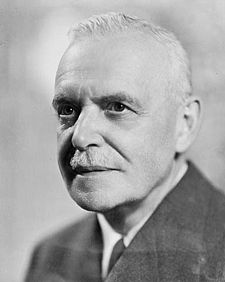 |
Louis St. Laurent | 1948 | 1958 12th Prime Minister |
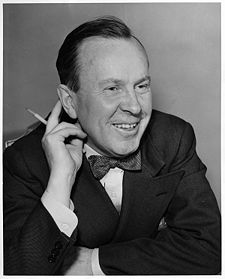 |
Lester B. Pearson | 1958 | 1968 14th Prime Minister |
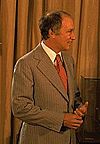 |
Pierre Trudeau | 1968 | 1984 15th Prime MInister |
| John Turner | 1984 | 1990 17th Prime Minister | |
| Herb Gray | 1990 (Interim) | 1990 | |
 |
Jean Chrétien | 1990 | 2003 20th Prime Minister |
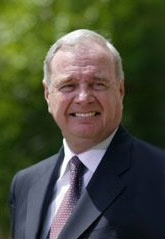 |
Paul Martin | 2003 | 2006 21st Prime Minister |
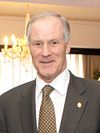 |
Bill Graham | 2006 (Interim) | 2006 |
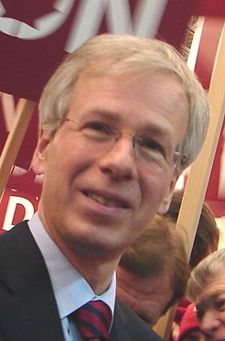 |
Stéphane Dion | 2006 | Present until May 2009. |
Principles and policies
In the present times, the Liberal party has favoured a variety of policies from both right and left of the political spectrum. Since the 1990s it has been a strong champion of balanced budgets, and it eliminated the deficit completely from the federal budget in 1995 by reducing spending on social programs or delegating them to the provinces. It had legalized same-sex marriage and use of cannabis for medical purposes, and has been proposing complete decriminalization of possession of small amounts of it. The party also holds progressive views on various other social issues like abortion. In spite of this, a socially conservative wing does exists within the party. For example, when the Civil Marriage Act was passed in 2004 (which legalized same-sex marriage), 32 Liberal MPs voted against the act.[3]
During the 2006 election the Liberal party's platform included an
- Introduction of a national childcare program
- Immediately cut tax for low income earners by 1 point from 16% to 15%
- Tougher firearm laws, including a ban on handguns and semi-automatic rifles
- Reducing wait times for medical treatments
- Increased support and opportunities for seniors, immigrants and the aboriginal populations
- Increased spending on military
- Additional investment in research and higher education.
In June 2008, the Liberal Party unveiled a new policy based on an ecotax called Green Shift.
Regional Liberal parties
Each province and one territory in Canada has its own Liberal Party.
Current governments and premiers:
- Ontario Liberal Party, Dalton McGuinty, MPP
- New Brunswick Liberal Association, Shawn Graham, MLA
- Prince Edward Island Liberal Party, Robert Ghiz, MLA
Current official oppositions and leaders:
- Liberal Party of Newfoundland and Labrador, Yvonne Jones, MHA
- Yukon Liberal Party, Arthur Mitchell, MLA
Third party status and leaders:
- Nova Scotia Liberal Party, Stephen McNeil, MLA
- Manitoba Liberal Party, Jon Gerrard, MLA
Not represented provincially and leader:
- Saskatchewan Liberal Party, Frank Proto (Interim Leader) / Ryan Bater (Leader-Elect)
The relationship between the federal and provincial Liberal parties in Canada varies across Canada. In the four largest provinces (BC, Alberta, Ontario and Quebec) the parties are informally linked to varying degrees. In the case of BC and Quebec, the provincial party tends to maintain neutrality in federal politics. In the 6 other provinces and one territory, the provincial parties are direct organizational affiliates with their federal counterpart.
The Quebec Liberal Party was long affiliated with the federal Liberals since Confederation. In the 1940s, the party's fortunes were aided and hindered by close association with the federal Grits over the issue of conscription, winning the 1939 election but losing in 1944. The provincial party, serving a long spell in opposition, partially due to the conscription fallout, formally severed ties in 1955. Since then, relations have been tense between the federal and provincial parties, as examplified by Pierre Trudeau and Robert Bourassa's bickering over nationalism.
Some in the Alberta Liberal Party feel it has suffered as a result of federal Liberal policies unpopular in Western Canada, such as the National Energy Program and official bilingualism. The British Columbia Liberal Party ended its own ties with the federal party in 1987.
The Northwest Territories and Nunavut have non-partisan legislatures. Historically the Northwest Territories had political parties between 1898 and 1905. In 1905 the bulk of the populated parts were formed into the provinces of Alberta and Saskatchewan. the Northwest Territories Liberal Party formed the opposition for two elections before 1905.
See also
- Liberalism
- Liberalism worldwide
- Liberal democracy
- Liberalism in Canada
- List of political parties in Canada
- Official Opposition (Canada)
- Liberal leadership conventions
- Liberal Party of Canada leadership convention, 1968
- Liberal Party of Canada leadership convention, 2003
- Liberal Party of Canada leadership convention, 2006
- Liberal Party of Canada leadership convention, 2009
- Liberal Party candidates, 2006 Canadian federal election
- Liberal Party candidates, 2004 Canadian federal election
- Liberal Party candidates, 2000 Canadian federal election
- Liberal Party candidates, 1997 Canadian federal election
- Liberal Party candidates, 1993 Canadian federal election
Further reading
- Wallace, W.S. (1948). "History of the Liberal Party of Canada". The Encyclopedia of Canada IV. Toronto: University Associates of Canada. 75-76.
- McCall, Christina; Stephen Clarkson. "Liberal Party". The Canadian Encyclopedia.
References
- ↑ "Political Parties". Parliament of Canada. Retrieved on 2008-11-25.
- ↑ "Dion to resign after Liberals choose new leader", Canadian Broadcasting Corporation (2008-10-20). Retrieved on 2008-10-25.
- ↑ http://www.parl.gc.ca/common/Bills_ls.asp?Parl=38&Ses=1&ls=c38
External links
- Liberal Party of Canada (official website)
- Liberal Party of Canada channel at YouTube
|
||||||||||||||
|
|||||
|
||||||||||||||